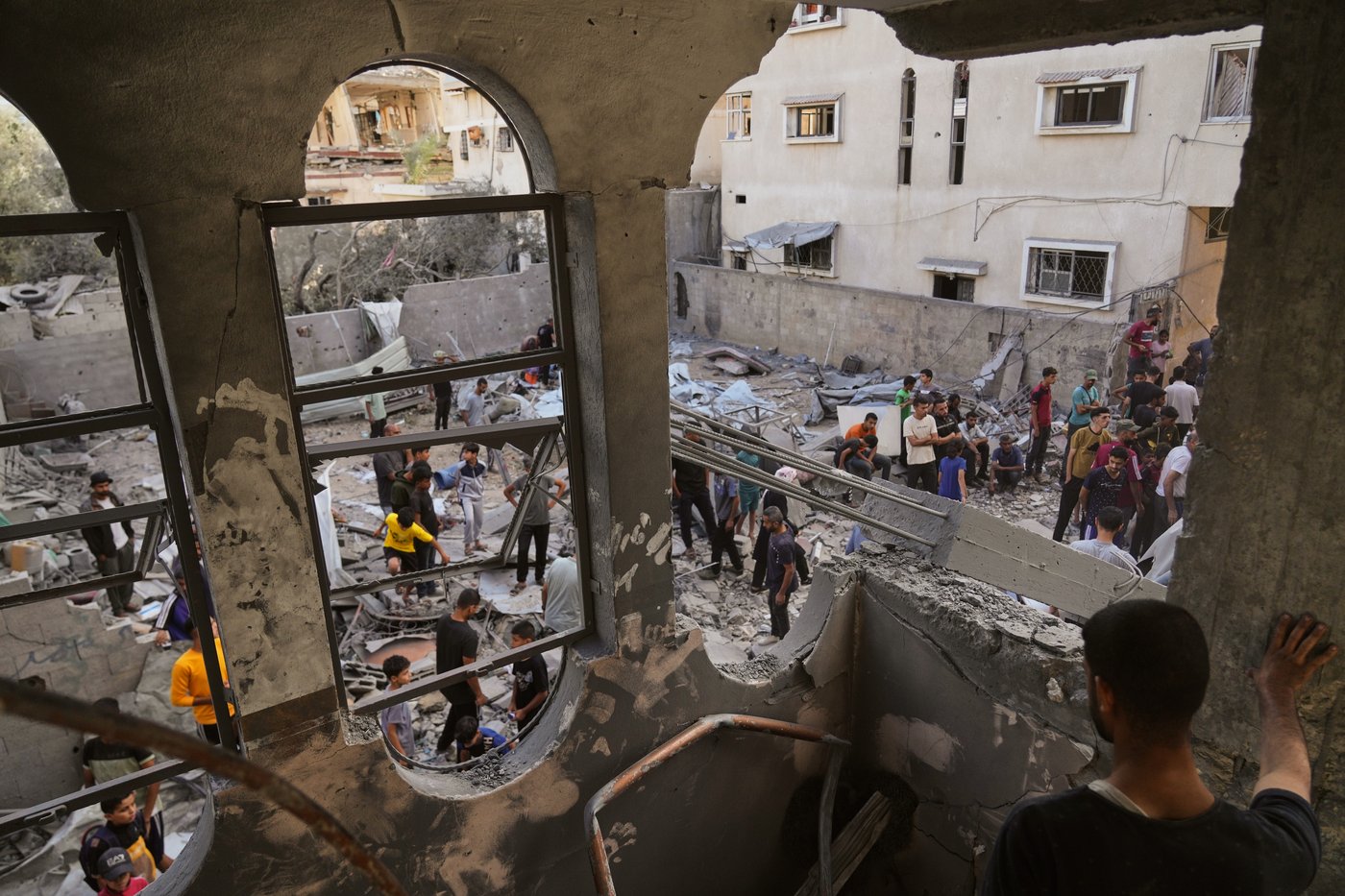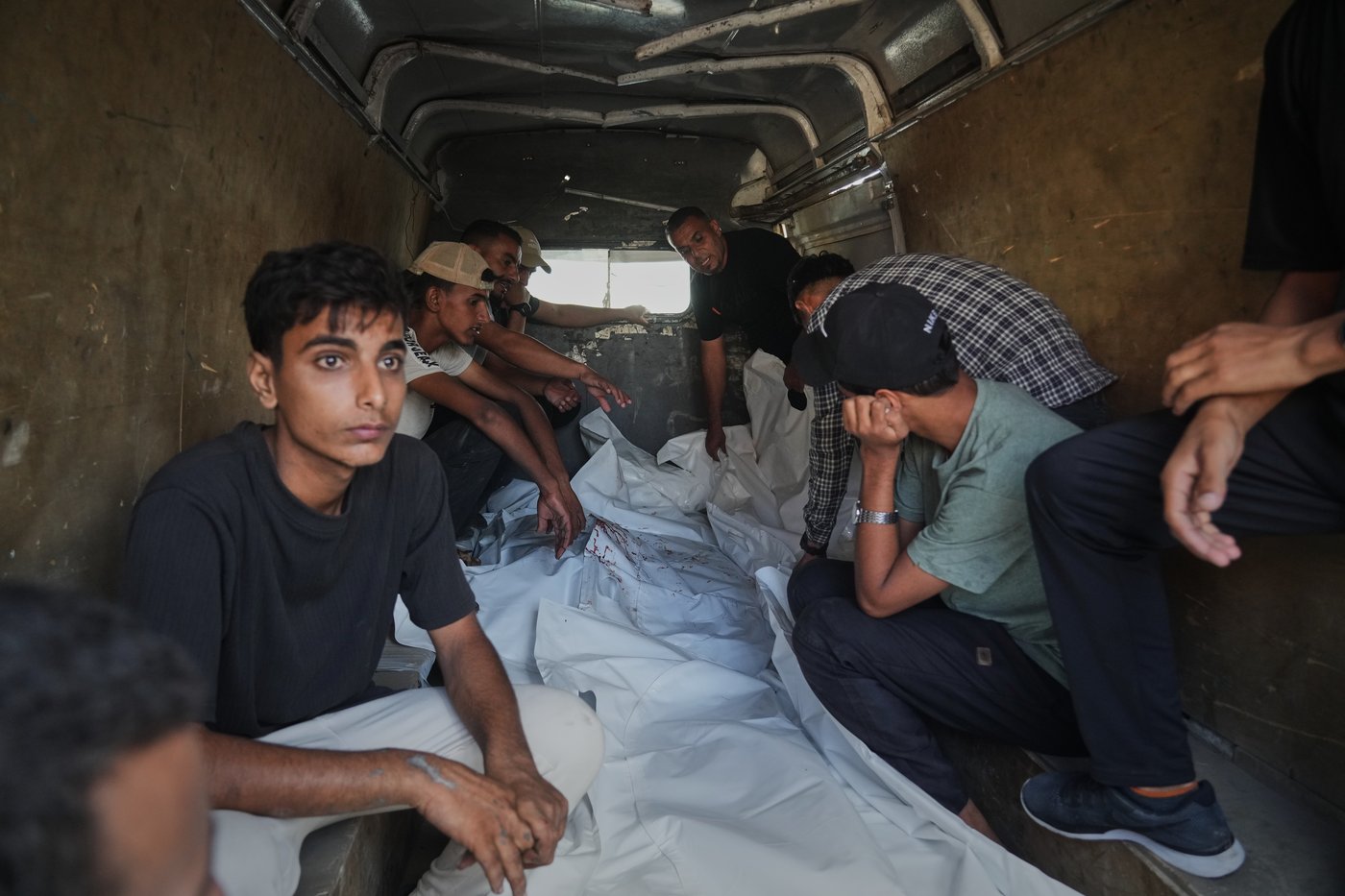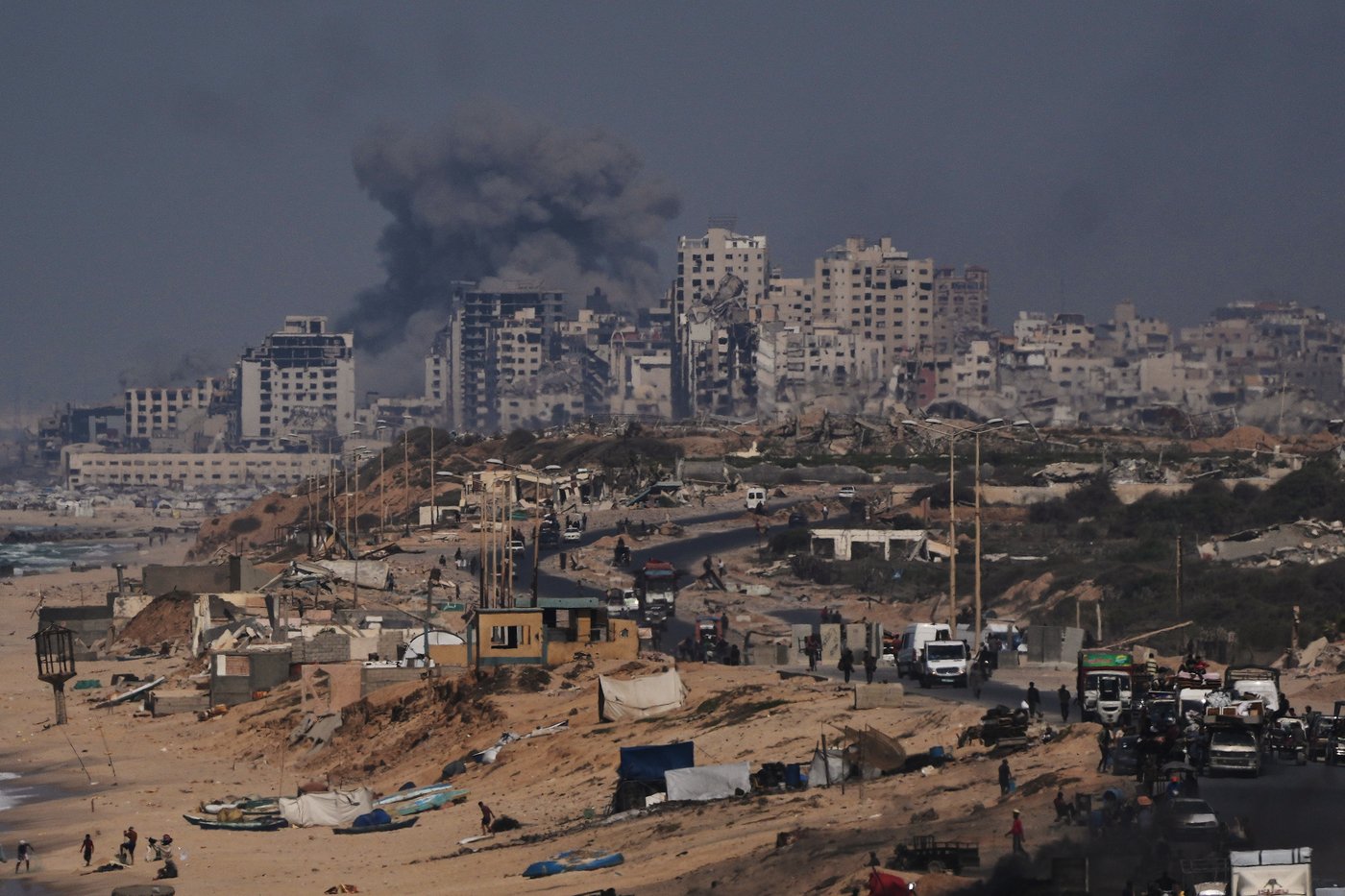
Airstrikes and gunfire kill at least 59 people in Gaza as pressure grows for ceasefire, hostage deal
DEIR AL-BALAH, Gaza Strip (AP) — Israeli strikes and gunfire killed at least 59 people across Gaza, health officials said Saturday, as international pressure grows for a ceasefire and hostage return deal while Israel’s leader remained defiant about continuing the war.
Among the dead were those hit by two strikes in the Nuseirat refugee camp — nine from the same family in a house and, later, 15 in the same camp, including women and children, according to staff at al-Awda Hospital, where the bodies were brought. Five others were killed when a strike hit a tent for the displaced, according to Nasser Hospital, which received the dead.
Israel’s army said it was not aware of anyone being killed by gunfire Saturday in southern Gaza, nor of a strike in the Nuseirat area during the time and at the location provided by the hospital.
The director of Shifa Hospital in Gaza City told The Associated Press that medical teams there were concerned about Israeli “tanks approaching the vicinity of the hospital,” restricting access to the facility where 159 patients are being treated.
“The bombardment has not stopped for a single moment,” Dr. Mohamed Abu Selmiya said.
He added that 14 premature babies were treated in incubators in Helou Hospital, though the head of neonatal intensive care there, Dr. Nasser Bulbul, has said that facility’s main gate was closed because of drones flying over the building.
Netanyahu and Trump scheduled to meet as pressure grows
The attacks came after a defiant Israeli Prime Minister Benjamin Netanyahu told fellow world leaders at the U.N. General Assembly on Friday that his nation “must finish the job” against Hamas in Gaza. Forty-eight hostages are still held captive there, around 20 of them believed by Israel to be alive.
Netanyahu’s words began after dozens of delegates from multiple nations walked out of the U.N. General Assembly hall en masse Friday morning as he began speaking.
“You were like the last of the lepers. Netanyahu, we promise you that if you don’t bring a comprehensive agreement and end the war, you will forever be a leper,” said Itzik Horn, the father of Eitan Horn, one of the hostages held in Gaza since the Hamas attack that started the war. He was referencing the U.N. speech and Israel’s isolation.
“My son Eitan sleeps sick and starving on the floor of a tunnel in Gaza or, worse, is used as a human shield against IDF fighters. What will you save him with?” Horn added Saturday evening.
International pressure on Israel to end the war is increasing, with a growing list of countries deciding recently to recognize Palestinian statehood, which Israel rejects.
Countries have been lobbying U.S. President Donald Trump to press Israel for a ceasefire. Trump and Netanyahu are scheduled to meet Monday. At a weekly protest in Tel Aviv Saturday night, a hostage who had been held in Gaza for 471 days begged Trump to give the remaining captives the same chance to return home.
“Mr. President, as you meet Prime Minister Netanyahu, please make the hostages your top priority,” Doron Steinbrecher, 32, said. “Families remain torn apart, their loved ones trapped in darkness, some waiting for a chance to return to life and freedom, others waiting to be buried with dignity.”
Among those whose bodies are held in Gaza is Inbar Haiman. Her uncle asked Saturday at a protest in Jerusalem that Trump help facilitate the return. “We want her back home as if she were alive,” Eli Cohen said.
On Friday, Trump told reporters he believes the U.S. is close to achieving a deal on easing fighting in Gaza that “will get the hostages back” and “end the war.”
Yet, Israel is pressing ahead with another major ground operation in Gaza City, which experts say is experiencing famine. More than 300,000 people have fled, but up to 700,000 are still there, many because they can’t afford to relocate.
Hospitals are short on supplies and targeted by airstrikes
The strikes Saturday morning demolished a house in Gaza City’s Tufah neighborhood, killing at least 11 people, more than half of them women and children, according to Al-Ahly Hospital, where the bodies were brought. Four other people were killed when an airstrike hit their homes in the Shati refugee camp, according to Shifa Hospital. Six other Palestinians were killed by Israeli gunfire while seeking aid in southern and central Gaza, according to the Nasser and Al Awda hospitals.
Hospitals and health clinics in Gaza City are on the brink of collapse. Nearly two weeks into the offensive, two clinics have been destroyed by airstrikes, two hospitals shut down after being damaged and others struggling with medicine, equipment, food and fuel in short supply, according to the Gaza Health Ministry.
Many patients and staff have been forced to flee hospitals, leaving behind only a few doctors and nurses to tend to children in incubators or other patients too ill to move.
On Friday, aid group Doctors Without Borders said it was forced to suspend activities in Gaza City. The group said Israeli tanks were less than a kilometer (half a mile) from its facilities, creating an “unacceptable level of risk” for its staff.
Meanwhile, the food situation in the north has also worsened, as Israel has halted aid deliveries through its crossing into northern Gaza since Sept. 12 and has increasingly rejected U.N. requests to bring supplies from southern Gaza into the north, the U.N. Office for the Coordination of Humanitarian Affairs said.
COGAT, the Israeli military agency in charge of transferring aid to the territory, said Saturday that humanitarian aid to the northern Gaza Strip “continues on an ongoing basis,” and that it has increased significantly over recent weeks at a crossing into central Gaza.
“Food is scarce and expensive and water is not safe to drink,” said Amal al-Aas, who lives with her husband, three children and her father in western Gaza City.
People who are fleeing Gaza City for the south said food remains too expensive, and runs out at crammed charity kitchens offering staples like lentil soup and rice.
“Sometimes the food runs out before we get some. We go home empty-handed,” said Fatima Al-Daghma, who was displaced from eastern Khan Younis, on Saturday.
Israel’s campaign in Gaza has killed more than 65,900 people and wounded more than 167,000 others, Gaza’s Health Ministry said. It doesn’t distinguish between civilians and combatants, but says women and children make up around half the fatalities. The ministry is part of the Hamas-run government, but U.N. agencies and many independent experts consider its figures to be the most reliable estimate of wartime casualties.
Israel’s campaign was triggered when Hamas-led militants stormed into Israel on Oct. 7, 2023, killing around 1,200 people and taking 251 hostage.
___
Magdy reported from Cairo.
___
Follow AP’s war coverage at https://apnews.com/hub/israel-hamas-war



Join the Conversation!
Want to share your thoughts, add context, or connect with others in your community?
You must be logged in to post a comment.


















